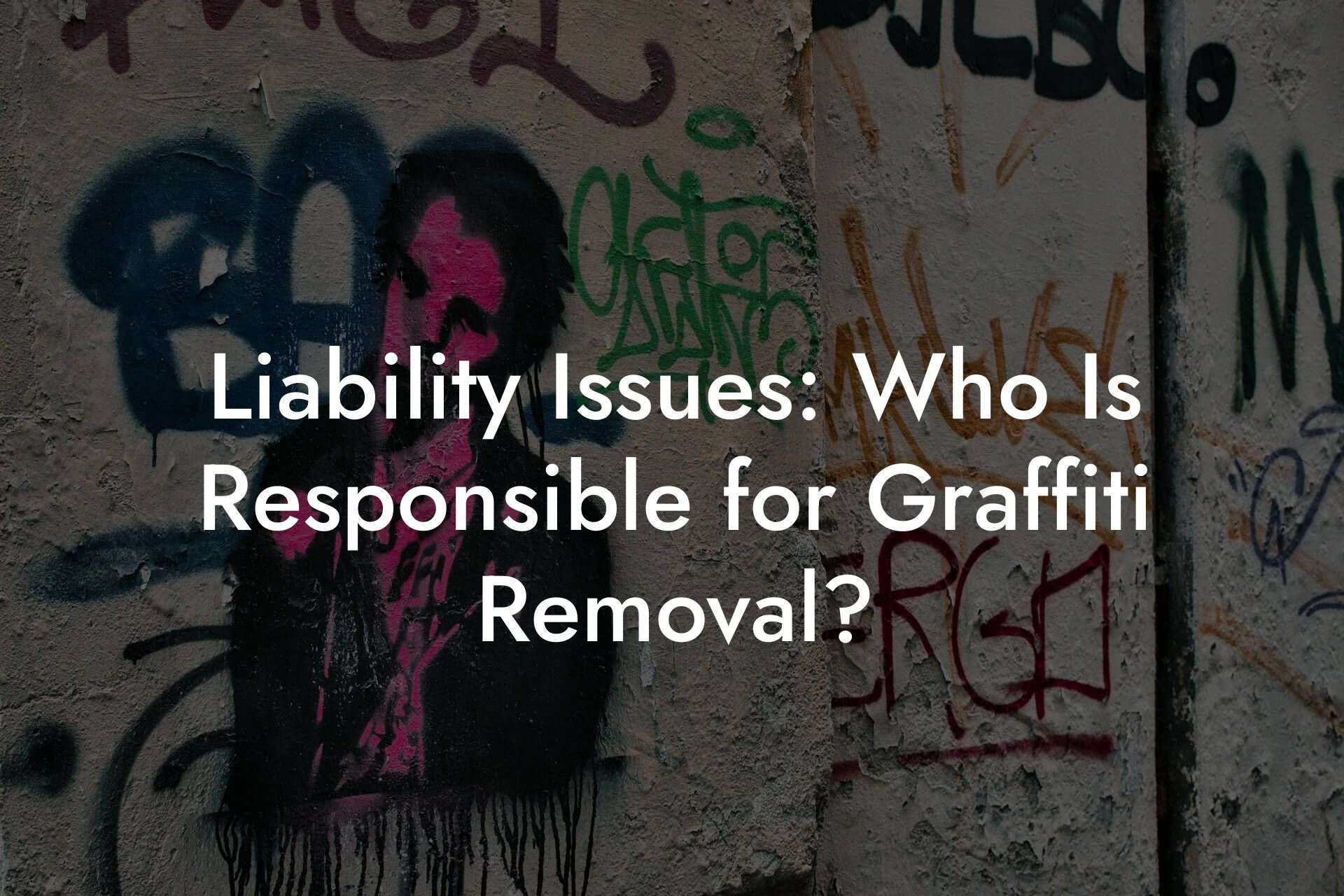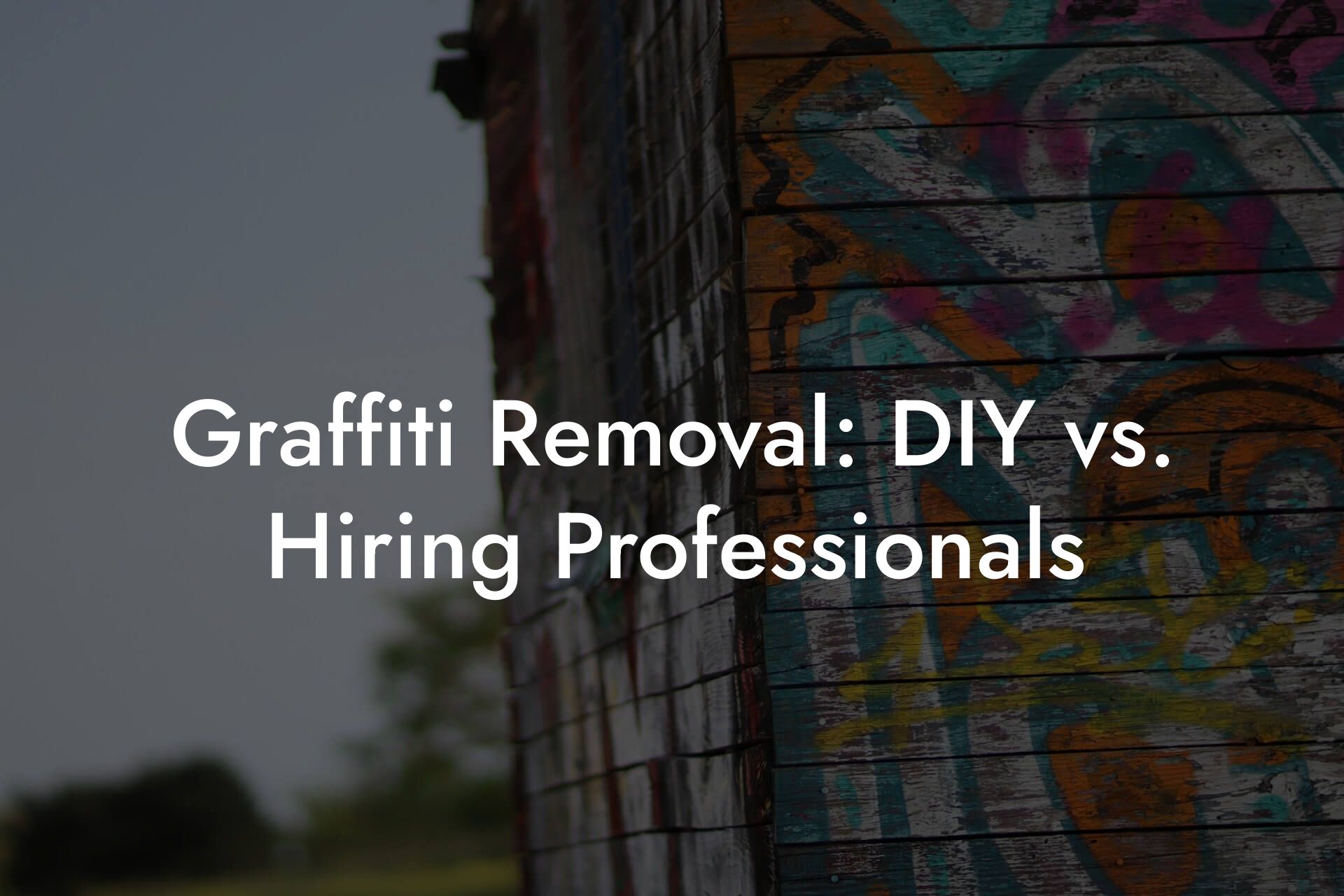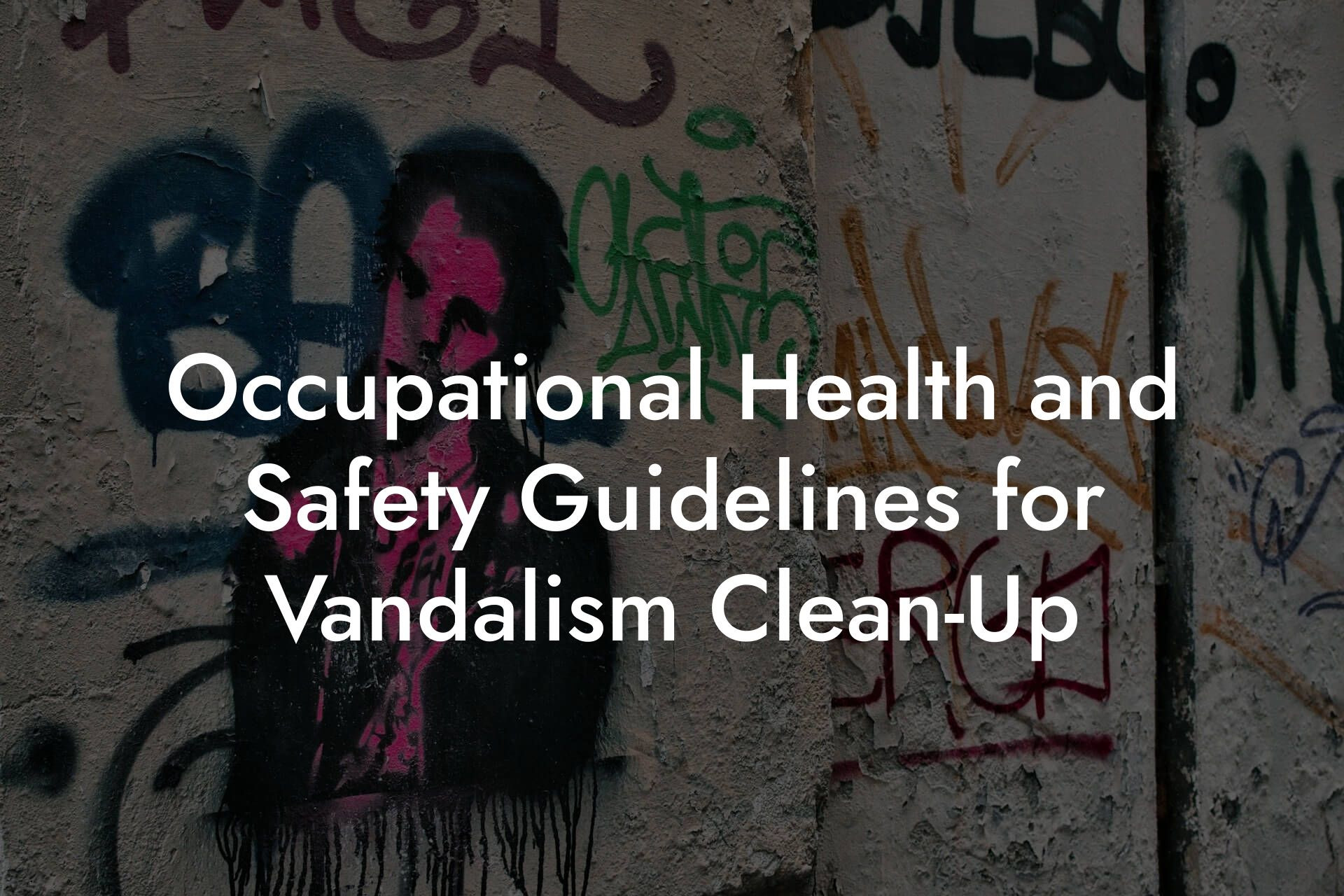As a business owner in London, dealing with graffiti vandalism can be frustrating and overwhelming. At Graffiti Removal London, we understand the importance of removing graffiti quickly and safely to maintain the appearance and value of your property. However, graffiti removal can be a hazardous process if not done properly. In this article, we will outline the essential safety precautions to take during graffiti removal to ensure a safe and successful cleanup.
Table of Contents
Personal Protective Equipment (PPE)
Before starting any graffiti removal process, it's crucial to wear the right personal protective equipment (PPE). This includes:
- Gloves: to protect hands from harsh chemicals and abrasive materials
- Safety glasses or goggles: to protect eyes from chemical splashes and debris
- Face mask or respirator: to prevent inhalation of chemical fumes and particles
- Long-sleeved clothing and pants: to protect skin from chemical splashes and stains
- Closed-toe shoes: to prevent foot injuries from sharp objects or chemicals
Remember to choose PPE that is specifically designed for graffiti removal and follow the manufacturer's instructions for use.
Hazardous Materials and Chemicals
Graffiti removal often involves the use of chemicals and solvents to break down and remove the graffiti. These substances can be hazardous to human health and the environment if not handled properly. When working with chemicals, make sure to:
- Read and follow the instructions on the product label
- Wear the recommended PPE
- Use the chemical in a well-ventilated area
- Avoid mixing different chemicals
- Dispose of chemicals and their containers according to local regulations
It's also important to choose eco-friendly and environmentally responsible chemicals whenever possible.
Slip, Trip, and Fall Hazards
Graffiti removal often involves working at heights, on ladders, or on uneven surfaces. To minimize the risk of slips, trips, and falls:
- Ensure the surface is clean and dry before starting work
- Use ladder safety equipment, such as ladder stabilizers and levelers
- Maintain three points of contact with the ladder at all times
- Avoid overreaching or leaning while on a ladder
- Use non-slip mats or coatings on floors and surfaces
It's also important to ensure that the area is well-lit and free from obstacles to prevent tripping hazards.
Electrical and Fire Hazards
Graffiti removal may involve the use of electrical equipment, such as pressure washers or sanders. To minimize the risk of electrical and fire hazards:
- Use electrical equipment that is specifically designed for outdoor use
- Keep electrical equipment away from water and moisture
- Avoid overloading electrical outlets or extension cords
- Keep a fire extinguisher nearby
- Avoid using open flames or sparks near flammable materials
It's also important to follow the manufacturer's instructions for electrical equipment and to have a fire safety plan in place.
Respiratory Hazards
Graffiti removal can involve the use of chemicals and solvents that can release harmful fumes and particles into the air. To minimize the risk of respiratory hazards:
- Wear a face mask or respirator when working with chemicals
- Use ventilation equipment, such as fans or exhaust systems
- Avoid working in enclosed or poorly ventilated areas
- Take regular breaks in a well-ventilated area
It's also important to choose chemicals and solvents that are low in volatile organic compounds (VOCs) and to follow the manufacturer's instructions for use.
Environmental Considerations
Graffiti removal can have an impact on the environment if not done properly. To minimize the environmental impact:
- Choose eco-friendly and environmentally responsible chemicals
- Avoid using chemicals near waterways or storm drains
- Dispose of chemicals and their containers according to local regulations
- Use reusable equipment and materials whenever possible
It's also important to follow local regulations and guidelines for graffiti removal and to consider the impact on local wildlife and ecosystems.
Training and Experience
Graffiti removal requires specialized training and experience to ensure a safe and successful cleanup. At Graffiti Removal London, our team is fully trained and experienced in graffiti removal techniques and safety protocols. We use the latest equipment and technology to ensure a safe and efficient removal process.
If you're considering attempting graffiti removal yourself, make sure to research and follow safety protocols, and consider hiring a professional graffiti removal service like Graffiti Removal London to ensure a safe and successful cleanup.
Graffiti removal can be a hazardous process if not done properly. By following the safety precautions outlined in this article, you can minimize the risk of injury and ensure a safe and successful cleanup. At Graffiti Removal London, we prioritize safety and use the latest equipment and technology to ensure a safe and efficient removal process. Contact us today to learn more about our graffiti removal services and to schedule a cleanup.
Frequently Asked Questions
What is the importance of safety precautions during graffiti removal?
Graffiti removal can be a hazardous process if not done properly. It involves the use of chemicals, high-pressure washes, and other equipment that can pose risks to the remover, bystanders, and the environment. Safety precautions are essential to prevent injuries, property damage, and environmental harm.
What are the common hazards associated with graffiti removal?
The common hazards associated with graffiti removal include chemical exposure, skin and eye irritation, respiratory problems, falls from heights, electrical shock, and damage to surrounding surfaces.
What personal protective equipment (PPE) should I wear during graffiti removal?
It is essential to wear appropriate PPE, including gloves, safety glasses, face masks, and protective clothing, to prevent skin and eye irritation, and respiratory problems.
How can I prevent chemical exposure during graffiti removal?
To prevent chemical exposure, always read the label and follow the instructions, wear appropriate PPE, and ensure good ventilation. Additionally, choose eco-friendly and biodegradable products whenever possible.
What are the safety precautions for removing graffiti from high surfaces?
When removing graffiti from high surfaces, use appropriate access equipment, such as ladders or cherry pickers, and ensure they are securely positioned. Always maintain three points of contact, and consider hiring a professional if you are not experienced in working at heights.
How can I prevent damage to surrounding surfaces during graffiti removal?
To prevent damage to surrounding surfaces, test the removal method on a small, inconspicuous area first, and use a gentle cleaning solution. Avoid using high-pressure washes or abrasive materials that can damage surfaces.
What are the environmental considerations for graffiti removal?
Graffiti removal can have environmental implications, such as water pollution and chemical contamination. Always follow environmental regulations, and choose eco-friendly and biodegradable products whenever possible.
Can I use household cleaning products for graffiti removal?
It is not recommended to use household cleaning products for graffiti removal, as they can damage surfaces, and may not be effective in removing graffiti. Instead, use specialized graffiti removal products that are designed for the task.
How can I ensure the graffiti removal process is environmentally friendly?
To ensure the graffiti removal process is environmentally friendly, choose eco-friendly and biodegradable products, use minimal water, and dispose of waste and chemicals responsibly.
What are the safety precautions for removing graffiti from sensitive surfaces?
When removing graffiti from sensitive surfaces, such as historic buildings or cultural artifacts, use gentle cleaning solutions, and test the removal method on a small, inconspicuous area first. Consider hiring a professional with experience in removing graffiti from sensitive surfaces.
Can I remove graffiti myself, or should I hire a professional?
While it is possible to remove graffiti yourself, it is recommended to hire a professional, especially if you are not experienced in graffiti removal, or if the graffiti is on a high surface, or sensitive material. Professionals have the necessary training, equipment, and experience to remove graffiti safely and effectively.
What are the benefits of hiring a professional graffiti removal service?
The benefits of hiring a professional graffiti removal service include ensuring the job is done safely and effectively, minimizing damage to surrounding surfaces, and reducing the risk of environmental harm.
How can I prevent future graffiti incidents?
To prevent future graffiti incidents, consider installing security cameras, improving lighting, and increasing surveillance in high-risk areas. Additionally, engage with the local community, and implement anti-graffiti initiatives.
What are the legal implications of graffiti vandalism?
Graffiti vandalism is a criminal offense, and perpetrators can face fines, community service, and even imprisonment. Additionally, property owners can be held liable for not taking reasonable steps to prevent graffiti vandalism.
How can I report graffiti vandalism?
To report graffiti vandalism, contact the local authorities, or report it to the police. You can also report it to your local council or graffiti removal service.
What is the best way to remove graffiti from different types of surfaces?
The best way to remove graffiti from different types of surfaces depends on the surface material. For example, gentle cleaning solutions are best for sensitive surfaces, while more aggressive methods may be needed for concrete or brick.
Can I use pressure washes for graffiti removal?
Pressure washes can be effective for graffiti removal, but they can also damage surfaces, and should be used with caution. Always test the surface first, and use a wide fan tip to prevent damage.
How can I remove graffiti from delicate surfaces?
To remove graffiti from delicate surfaces, use gentle cleaning solutions, and test the removal method on a small, inconspicuous area first. Avoid using abrasive materials or high-pressure washes that can damage surfaces.
What are the safety precautions for removing graffiti in confined spaces?
When removing graffiti in confined spaces, ensure good ventilation, and wear appropriate PPE, including respiratory protection. Avoid using chemicals that can cause respiratory problems.
How can I ensure the graffiti removal process is compliant with regulations?
To ensure the graffiti removal process is compliant with regulations, follow environmental regulations, and choose eco-friendly and biodegradable products whenever possible. Additionally, ensure that all personnel involved in the removal process are trained and certified.
What is the importance of documenting the graffiti removal process?
Documenting the graffiti removal process is important for tracking progress, identifying areas for improvement, and providing evidence in case of legal proceedings.
How can I prevent graffiti removal from causing damage to my business?
To prevent graffiti removal from causing damage to your business, choose a reputable and experienced graffiti removal service, and ensure they have the necessary insurance and certifications.
What is the average cost of graffiti removal?
The average cost of graffiti removal varies depending on the size of the area, type of surface, and complexity of the removal process. It is best to get a quote from a reputable graffiti removal service.
How long does the graffiti removal process typically take?
The graffiti removal process typically takes anywhere from a few hours to several days, depending on the size of the area, type of surface, and complexity of the removal process.
Toby Doherty
Toby Doherty is a seasoned graffiti removal expert with over 20 years of experience in the industry. Throughout his career, Toby has helped countless businesses and property owners in London maintain clean, graffiti-free spaces. His extensive knowledge of graffiti removal techniques, from eco-friendly solutions to advanced technologies like laser cleaning, makes him a trusted authority in the field. Passionate about restoring urban environments, Toby combines his hands-on expertise with a commitment to staying up-to-date on the latest industry trends and innovations. When he’s not out in the field, Toby shares his insights through detailed articles, offering practical advice on everything from graffiti prevention to legal considerations.



